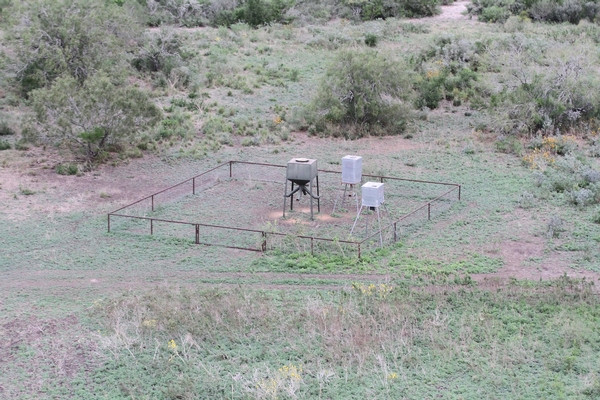
Feed Pen Design

One popular question I receive regularly is about feed pens--particularly size and design. In my nearly thirty years of working with a wide range of ranches throughout Texas, I have seen just about every type imaginable and have some solid conclusions based on their performance and results. The idea behind a feed pen is to allow access to those animals you wish to attract and feed while excluding those that you do not. Animals to be excluded typically include feral hogs, javelina and domestic livestock such as horses and cattle.
Regarding material to use, the 36” tall hog panels are hard to beat. There are some great manufactured panels available that work great too but the standard hog panel works very effectively. Hog panels will keep the vast majority of feral hogs and javelina out, yet provide the smallest of deer easy access. T-posts, provided they are driven down low enough and spaced close enough, provide exceptional support in most cases.
Regarding shape, based on my experience, round proves better for the deer. I see far more deer hung or killed in square or rectangle pens than round ones. Circular pens offer no hard corners or places for deer to get hemmed in. Based on my observations, I always recommend round shaped pens. The perfect pen will also use hailscreen or hardware cloth folded over the top to prevent legs/hooves getting caught in the upper third of the hog panel.
Regarding brush within the pen, I do not recommend it for deer feeder pens. Deer use their eyes, ears and nose to detect danger and feeders attract predators. Brush within a feed pen restricts a deer’s ability to detect danger so they will feed less, be more nervous with increase stress levels. A clean feed pen allows them to relax, eat more slowly and eat longer since they are more at ease.
Regarding size, bigger is better. Many folks complain of the initial cost of the panels and t-posts (not to mention the labor required) so they make the pens small. It is my experience that if you use only one feeder inside the pen, you can get away with a pen sixty foot in diameter, or across. But if you use multiple feeders such as a protein feeder and a corn feeder or even cottonseed baskets, you need to make the pen one hundred foot across to be most effective. I realize this is a large pen but look at this photo taken from above the pen. Look how the legs of each feeder extend out and how little room is available between each feeder. When considering a deer’s ability to quickly escape, they must have the space and time to set their feet, plan their jump and effectively clear the panel to make a safe exit. A crowded feed pen with obstructed views from multiple feeders and feeder legs adds confusion and reduced space from the feeder to the panel offers them little opportunity to prepare for and execute the proper jump. The majority of deer I see caught or found dead in a feed pen is because they misjudged the distance of the panel and were not adequately prepared for the jump.
For example: this is how it is correctly done. Note the large clean round pen with feeders spaced apart and hardware cloth in place to prevent legs being captured.
Here is an example of how NOT to do it: Note now crowded the small pen is, there is little room for deer, only the most aggressive ones can enter this pen.

Another example of a high dollar wrong pen design. Note the small area, hard corners and too many feeders in such a small pen:

If you intend to feed deer you need to construct the most effective pen that will withstand the test of time, exclude those non-target species and provide a safe and effective space for them to eat as much as they need or want.
Posted in: Supplemental Feeding

